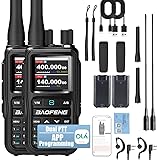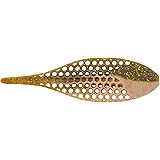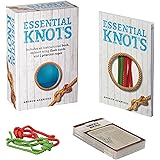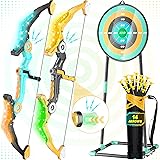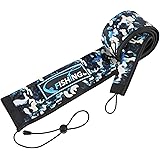The “Rule of Three” is a widely recognized principle in survival, helping prioritize actions based on immediate threats:
- 3 minutes without air: This emphasizes the critical need to secure an airway and ensure breathing.
- 3 hours without shelter in extreme conditions: Highlighting the rapid onset of hypothermia or heatstroke.
- 3 days without water: Stressing the importance of hydration to avoid dehydration.
- 3 weeks without food: While uncomfortable, the human body can endure this period, making food a lower immediate priority than air, shelter, or water.
This rule underscores that your most immediate concerns are breathing, then shelter/warmth, then water, and finally food. Applying this hierarchy of needs can guide your decisions in a crisis.
Essential Items for Nature Outings
The video provides a helpful list of items to take when venturing into nature, forming the basis of a basic survival kit:
- Repellent (for insects)
- Sterile bandages
- Painkillers
- Activated charcoal (for poisoning/diarrhea)
- Antiseptic products
- Plasters (band-aids)
- Products for treating burns
- A folding knife
- Thread
- Vegetable oil (for various uses, including tick removal)
- Rope
- Tourniquet (for severe bleeding)
Expanding on this, consider adding a flashlight, a multi-tool, a map and compass (and knowing how to use them), a whistle for signaling, and a small amount of non-perishable emergency food. These survival hacks and tools collectively boost your self-reliance.
Encountering an aggressive dog can be frightening. The video provides a clear sequence of actions:
- Slow down and stay calm.
- Do not look directly into the animal’s eyes, as this can be perceived as a challenge.
- Use available items like a coat, rocks, sand, a hat, umbrella, or keys to defend yourself or create a barrier.
- Command the animal firmly: ‘Stay back!’
- Distract the dog, perhaps by throwing an object away from you.
- Without sudden movements, slowly vacate the area.
Staying calm is paramount. Most dog attacks are preventable, and understanding canine body language can help avoid escalation.
Escaping Crocodiles
In regions where crocodiles are present, knowing how to escape an attack is vital. The video suggests using zigzag movements. Crocodiles are powerful and fast in short bursts, but they are not agile in turning rapidly. Moving in a zigzag pattern can exploit this weakness, providing a better chance of escape on land.
Navigating Natural Disasters and Unexpected Dangers
Preparation for natural disasters and other unforeseen hazards is critical for survival. The video outlines steps for hurricanes, storms, elevator falls, and ice falls.
Hurricane Survival
Hurricanes present multiple threats, from high winds to flooding. The video breaks down actions based on your location:
- If in a building: Close windows and move away from them. Disconnect electricity and turn off gas to prevent fires and explosions. Stay deep inside the building, preferably in an interior room or basement.
- If outside: Stay away from street lamps and trees, as they can fall. Find sturdy cover like an underpass or subway station. Use protection from flying debris, such as sturdy boxes or planks.
- If out in the open: Never hide under a tree, as it attracts lightning and can fall. Seek cover in a hollow or ravine.
- If in a car: Close windows. Do not stop near trees, billboards, or bus stops. Wait out the hurricane in the car, as it offers some protection.
After a hurricane passes, exercise extreme caution. Check for gas leaks, and avoid elevators. Do not approach fallen trees or broken power lines. Remember that a hurricane may start again, or after-effects like flash floods could occur.
Storm and Lightning Safety
Lightning is a serious threat. The video highlights key safety rules during a storm:
- Avoid using ordinary corded telephones, as lightning can travel through phone lines.
- Do not touch water pipes, as water and metal can conduct electricity.
- Never hide under trees; they are common lightning targets.
- An opened umbrella can attract lightning due to its metal frame.
- Do not ride a bike or motorcycle during a storm.
- Be aware that lightning can strike the same place multiple times, and it also strikes rivers and lakes, making water activities dangerous.
Seek shelter in a sturdy building or a car (which acts as a Faraday cage, diverting the electrical current around you). Staying inside until the storm fully passes is the safest option.
Falling Elevator
While the likelihood of being stuck in a falling lift is extremely small—the video quotes 1 in 0.00000015%, signifying an incredibly rare event—it’s still wise to know what to do. If you find yourself in this improbable situation:
- Lie on your back, stretching out as much as the booth allows. This distributes the impact force across your body.
- Place one arm under your head to soften the blow and the other over your face to protect yourself from falling debris.
- Do not try to jump at the moment of impact with the bottom of the shaft. This won’t negate the force and could cause more severe injuries.
- Do not stand with your legs half bent. This puts immense pressure on your knees and spine upon impact.
Falling Through Ice
Falling through ice in cold weather is a critical emergency. You have approximately 10 minutes until your muscles seize up from the cold. The video advises:
- Don’t panic! Control your breathing. Panic wastes energy and accelerates hypothermia.
- Do not remove your clothes. The air trapped within them helps you stay afloat and provides a thin layer of insulation.
- Climb out via the same path along which you came, as it’s the strongest ice point.
- Place both arms on a hard part of the ice, stretching out your torso and leaning on your elbows and palms to distribute your weight.
- Lie flat on the ice and spread your weight over a large area once out.
- Crawl or roll to the shore.
As soon as you reach safety, head immediately to a warm, dry place to prevent hypothermia. Always keep away from thin ice and prioritize prevention.
Correct Seating Position in a Car
Even in everyday driving, your seating position can be a survival hack. The video highlights that correct seating allows faster reaction times in dangerous situations. Your back should be pressed against the seat, and when pressing the clutch or brake pedal, your legs should be almost straight but not locked. Adjust the back so your head is almost vertical, and your wrists should rest comfortably on the steering wheel when your arms are extended. Ensure your hands can freely use the gear stick, mirrors are in your field of view, and the steering wheel does not cover the dashboard. Hand position on the wheel should ideally be at 10 and 2 o’clock. This optimal position can significantly enhance your ability to control the vehicle and avoid accidents.
The Survival Mindset: Principles to Live By
Preparedness extends beyond physical skills; it includes mental resilience and having the right tools. Understanding fundamental principles and equipping yourself properly are key.
The “Rule of Three”
The “Rule of Three” is a widely recognized principle in survival, helping prioritize actions based on immediate threats:
- 3 minutes without air: This emphasizes the critical need to secure an airway and ensure breathing.
- 3 hours without shelter in extreme conditions: Highlighting the rapid onset of hypothermia or heatstroke.
- 3 days without water: Stressing the importance of hydration to avoid dehydration.
- 3 weeks without food: While uncomfortable, the human body can endure this period, making food a lower immediate priority than air, shelter, or water.
This rule underscores that your most immediate concerns are breathing, then shelter/warmth, then water, and finally food. Applying this hierarchy of needs can guide your decisions in a crisis.
Essential Items for Nature Outings
The video provides a helpful list of items to take when venturing into nature, forming the basis of a basic survival kit:
- Repellent (for insects)
- Sterile bandages
- Painkillers
- Activated charcoal (for poisoning/diarrhea)
- Antiseptic products
- Plasters (band-aids)
- Products for treating burns
- A folding knife
- Thread
- Vegetable oil (for various uses, including tick removal)
- Rope
- Tourniquet (for severe bleeding)
Expanding on this, consider adding a flashlight, a multi-tool, a map and compass (and knowing how to use them), a whistle for signaling, and a small amount of non-perishable emergency food. These survival hacks and tools collectively boost your self-reliance.
Essential Survival Hacks: Preparing for the Unexpected
In a world full of uncertainties, possessing fundamental survival hacks can empower you to face unexpected challenges with confidence. Whether you’re an avid outdoors enthusiast, a city dweller, or simply someone who believes in being prepared, knowing how to react in a crisis can be a true lifesaver. The video above offers a visual guide to a variety of critical techniques, from basic first aid to navigating natural disasters. This article expands on those vital tips, providing further context and practical advice to enhance your personal safety and emergency preparedness knowledge.
Critical First Aid: Immediate Responses for Injuries and Bites
Immediate action in an emergency can significantly impact outcomes. The video highlights several crucial first aid techniques. Understanding these simple yet effective methods is a cornerstone of emergency survival.
Wound Care and Stopping Bleeding
For securing an open wound, the video suggests using warm water to clean it, followed by applying aluminum chloride to stop bleeding. Aluminum chloride is a powerful astringent and coagulant, often found in styptic pencils for shaving cuts. In a pinch, any clean water is better than none for initial cleaning.
However, if aluminum chloride isn’t available, direct pressure on the wound with a clean cloth is the primary method to control bleeding. For deep wounds, the video wisely advises against pulling out any embedded objects. Removing an object could cause further damage, severe bleeding, or introduce infection. Instead, stabilize the object and seek immediate medical attention.
Bruises and Headaches
Dealing with everyday discomforts also falls under immediate response. For bruises, the video suggests apple cider vinegar. This common household item is thought to reduce inflammation and promote healing due to its acidic properties. Many people find success by soaking a cotton pad in apple cider vinegar and applying it to the bruised area for 10-15 minutes, several times a day.
To relieve a headache, the video shows placing a frozen product on the head. This works by constricting blood vessels, which can reduce inflammation and pain. A cold compress or ice pack applied to the temples or forehead can effectively alleviate headache symptoms by drawing blood down from your head.
Managing Bites: Ticks and Bees
Outdoor activities can lead to encounters with insects. If you find a tick, the video emphasizes careful removal. Do not remove it straight away without proper tools.
- Treat the bite area with vegetable oil. This can sometimes cause the tick to release its grip.
- Create a loop from a thread, carefully drawing it around the tick’s head and body.
- Slowly pull the thread upwards to remove the tick completely.
It is crucial to remove the tick alive and take it to a laboratory within two days to check for tick-borne encephalitis or Lyme disease. This step is vital for your health and safety. Always use tweezers or a tick removal tool if available, gripping as close to the skin as possible.
For bee stings, remember that only bees leave their stinger behind. Wasps do not. If stung by a bee, use an ordinary plastic card, like a credit card, to scrape the stinger out at a 45-degree angle. Pressing lightly on the skin, pass the card over the affected area to flick the stinger out. Then, treat the wound with an antiseptic product to prevent infection. Avoid using tweezers to pull the stinger, as this can squeeze more venom into the wound.
Mastering Essential Survival Skills for Self-Reliance
Beyond immediate first aid, developing fundamental survival skills enhances your ability to manage unexpected situations. From making fire to purifying water, these practical abilities are invaluable.
Knot Tying: A Crucial Skill
The video briefly demonstrates various knot-tying techniques, including a straight knot, hunter’s knot, fisherman’s knot, package knot, textile knot, grass knot, and oak knot. Each knot serves a distinct purpose, offering secure connections for different materials and situations. For example, a straight knot is excellent for joining two ropes of similar size, while a fisherman’s knot creates a very strong, permanent connection.
Practicing these knots is essential. A well-tied knot can secure gear, build a shelter, or even aid in rescue. Understanding which knot to use for a specific task is key to effective problem-solving in a survival scenario.
Fire Starting and Water Purification
Fire is critical for warmth, cooking, and signaling. The video shows starting a fire using a phone battery with steel wool or cotton wool. This method relies on the battery’s electrical current creating a spark when it contacts the fine metal fibers, igniting them.
For water purification, the video illustrates a basic filter using layers of cloth, charcoal, sand, and stones. This setup removes larger particulates but does not sterilize water. After filtering, boiling any collected water for at least one minute is the most effective way to kill bacteria, viruses, and parasites, making it safe to drink.
Extreme Measures: Breaking Handcuffs
While an extreme scenario, the video touches upon breaking handcuffs. This specific hack is geared towards situations of illegal restraint, where personal safety is under direct threat. It emphasizes self-preservation in the most dire circumstances, highlighting skills that could potentially be used for escape. It is not intended for any illicit activities.
Self-Defense and Personal Safety: Protecting Yourself
Personal safety involves both avoiding danger and knowing how to respond if confronted. The video offers valuable insights into self-defense and managing animal encounters.
Seven Self-Defense Techniques for Women
The video dedicates a segment to self-defense techniques, particularly for women. These moves focus on vulnerable points to create an opportunity for escape. Key targets include the eyes, nose, throat, solar plexus, knee, and groin. For instance, a quick punch to the groin or fingers to the eyes can stun an attacker, allowing time to flee. Remember these key points and practice basic moves: back attack, bag-punch, strangulation defense, seizing hair defense, wrist holds, and responding to a rear bear hug. The goal is always to incapacitate long enough to escape safely.
Dealing with Dog Attacks
Encountering an aggressive dog can be frightening. The video provides a clear sequence of actions:
- Slow down and stay calm.
- Do not look directly into the animal’s eyes, as this can be perceived as a challenge.
- Use available items like a coat, rocks, sand, a hat, umbrella, or keys to defend yourself or create a barrier.
- Command the animal firmly: ‘Stay back!’
- Distract the dog, perhaps by throwing an object away from you.
- Without sudden movements, slowly vacate the area.
Staying calm is paramount. Most dog attacks are preventable, and understanding canine body language can help avoid escalation.
Escaping Crocodiles
In regions where crocodiles are present, knowing how to escape an attack is vital. The video suggests using zigzag movements. Crocodiles are powerful and fast in short bursts, but they are not agile in turning rapidly. Moving in a zigzag pattern can exploit this weakness, providing a better chance of escape on land.
Navigating Natural Disasters and Unexpected Dangers
Preparation for natural disasters and other unforeseen hazards is critical for survival. The video outlines steps for hurricanes, storms, elevator falls, and ice falls.
Hurricane Survival
Hurricanes present multiple threats, from high winds to flooding. The video breaks down actions based on your location:
- If in a building: Close windows and move away from them. Disconnect electricity and turn off gas to prevent fires and explosions. Stay deep inside the building, preferably in an interior room or basement.
- If outside: Stay away from street lamps and trees, as they can fall. Find sturdy cover like an underpass or subway station. Use protection from flying debris, such as sturdy boxes or planks.
- If out in the open: Never hide under a tree, as it attracts lightning and can fall. Seek cover in a hollow or ravine.
- If in a car: Close windows. Do not stop near trees, billboards, or bus stops. Wait out the hurricane in the car, as it offers some protection.
After a hurricane passes, exercise extreme caution. Check for gas leaks, and avoid elevators. Do not approach fallen trees or broken power lines. Remember that a hurricane may start again, or after-effects like flash floods could occur.
Storm and Lightning Safety
Lightning is a serious threat. The video highlights key safety rules during a storm:
- Avoid using ordinary corded telephones, as lightning can travel through phone lines.
- Do not touch water pipes, as water and metal can conduct electricity.
- Never hide under trees; they are common lightning targets.
- An opened umbrella can attract lightning due to its metal frame.
- Do not ride a bike or motorcycle during a storm.
- Be aware that lightning can strike the same place multiple times, and it also strikes rivers and lakes, making water activities dangerous.
Seek shelter in a sturdy building or a car (which acts as a Faraday cage, diverting the electrical current around you). Staying inside until the storm fully passes is the safest option.
Falling Elevator
While the likelihood of being stuck in a falling lift is extremely small—the video quotes 1 in 0.00000015%, signifying an incredibly rare event—it’s still wise to know what to do. If you find yourself in this improbable situation:
- Lie on your back, stretching out as much as the booth allows. This distributes the impact force across your body.
- Place one arm under your head to soften the blow and the other over your face to protect yourself from falling debris.
- Do not try to jump at the moment of impact with the bottom of the shaft. This won’t negate the force and could cause more severe injuries.
- Do not stand with your legs half bent. This puts immense pressure on your knees and spine upon impact.
Falling Through Ice
Falling through ice in cold weather is a critical emergency. You have approximately 10 minutes until your muscles seize up from the cold. The video advises:
- Don’t panic! Control your breathing. Panic wastes energy and accelerates hypothermia.
- Do not remove your clothes. The air trapped within them helps you stay afloat and provides a thin layer of insulation.
- Climb out via the same path along which you came, as it’s the strongest ice point.
- Place both arms on a hard part of the ice, stretching out your torso and leaning on your elbows and palms to distribute your weight.
- Lie flat on the ice and spread your weight over a large area once out.
- Crawl or roll to the shore.
As soon as you reach safety, head immediately to a warm, dry place to prevent hypothermia. Always keep away from thin ice and prioritize prevention.
Correct Seating Position in a Car
Even in everyday driving, your seating position can be a survival hack. The video highlights that correct seating allows faster reaction times in dangerous situations. Your back should be pressed against the seat, and when pressing the clutch or brake pedal, your legs should be almost straight but not locked. Adjust the back so your head is almost vertical, and your wrists should rest comfortably on the steering wheel when your arms are extended. Ensure your hands can freely use the gear stick, mirrors are in your field of view, and the steering wheel does not cover the dashboard. Hand position on the wheel should ideally be at 10 and 2 o’clock. This optimal position can significantly enhance your ability to control the vehicle and avoid accidents.
The Survival Mindset: Principles to Live By
Preparedness extends beyond physical skills; it includes mental resilience and having the right tools. Understanding fundamental principles and equipping yourself properly are key.
The “Rule of Three”
The “Rule of Three” is a widely recognized principle in survival, helping prioritize actions based on immediate threats:
- 3 minutes without air: This emphasizes the critical need to secure an airway and ensure breathing.
- 3 hours without shelter in extreme conditions: Highlighting the rapid onset of hypothermia or heatstroke.
- 3 days without water: Stressing the importance of hydration to avoid dehydration.
- 3 weeks without food: While uncomfortable, the human body can endure this period, making food a lower immediate priority than air, shelter, or water.
This rule underscores that your most immediate concerns are breathing, then shelter/warmth, then water, and finally food. Applying this hierarchy of needs can guide your decisions in a crisis.
Essential Items for Nature Outings
The video provides a helpful list of items to take when venturing into nature, forming the basis of a basic survival kit:
- Repellent (for insects)
- Sterile bandages
- Painkillers
- Activated charcoal (for poisoning/diarrhea)
- Antiseptic products
- Plasters (band-aids)
- Products for treating burns
- A folding knife
- Thread
- Vegetable oil (for various uses, including tick removal)
- Rope
- Tourniquet (for severe bleeding)
Expanding on this, consider adding a flashlight, a multi-tool, a map and compass (and knowing how to use them), a whistle for signaling, and a small amount of non-perishable emergency food. These survival hacks and tools collectively boost your self-reliance.



